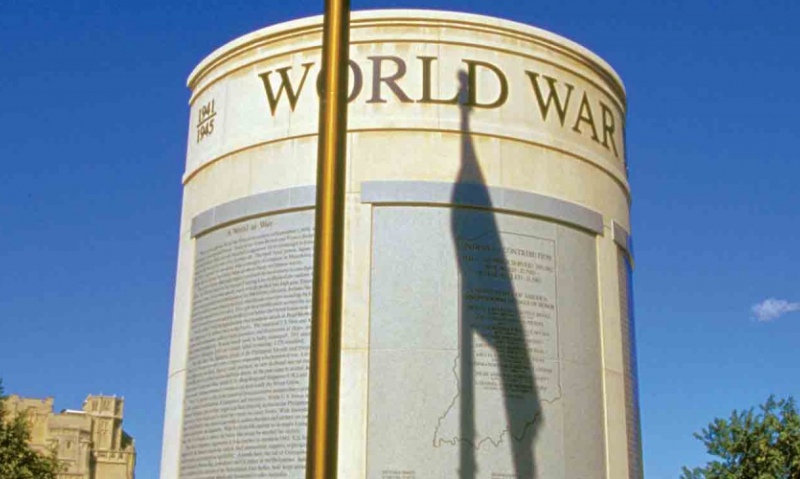
'Preserving the memories and incidents ...'
American Legion National Commander Charles E. Schmidt is calling on all posts, districts, counties, areas, zones, departments and affiliates of the organization to help build an unparalleled database of memorials and monuments that honor U.S. military service and sacrifice. The database and uploading instructions can be found at www.legion.org/memorials on the Legion’s national website.
“As The American Legion nears its centennial year, one aspect of our organization’s rich legacy is universal – ‘to preserve the memories and incidents of our associations in the great wars,’” Schmidt said, quoting from the Preamble to The American Legion Constitution. “We know that in virtually every corner of the country, and beyond our shores, American Legion Family members have paid tribute to military service, honor and remembrance by carving out sacred spaces in their communities to ensure that the price paid for freedom is not lost on future generations.”
Schmidt said the Legion’s memorials database project is a great opportunity to involve the entire American Legion Family, youth groups such as Boy Scouts, local civic organizations, schools and others. “It is especially important to assess the conditions of these memorials – whether it’s a plaque in the park listing a county’s war dead or a well-known community statue or plaza. What better way to commemorate the Legion’s centennial than to spruce up, repair and revive awareness to those who served before us, whose memorials and monuments may be showing the effects of age and weather? It’s also the perfect time for communities to reacquaint themselves with the meaning of their memorials.”
The American Legion Memorial Inventory Project is not focused on any one war era. “We know that American Legion posts care for memorials ranging from the Revolution to the Global War on Terrorism, all around the world,” Schmidt said. “We also are well aware that some of them have come under attack because they may contain some religious symbolism or language, and The American Legion steadfastly opposes removal or revision of such monuments. In order to ensure their continued respect and protection, we have a responsibility to index them and bring attention to their original and intended meaning.”
The web platform – easily accessed and used from a smartphone or electronic tablet – asks for the location of the memorial, a description of it, date of installation if known and a rating of its condition. Uploaders are also strongly encouraged to take photos of the memorial and post them onto the database. Once a submission has been made, it may take a couple of days before it appears, following review.
The American Legion is also working with the United States World War One Centennial Commission and the Pritzker Military Museum and Library to document monuments and memorials dedicated specifically to World War I, thousands of which were erected by the early American Legion. The 100 Cities/100 Memorials program includes a matching-money grant opportunity for applicants. More can be learned about that project at www.worldwar1centennial.org/100-cities-100-memorials-home online.
The American Legion National Executive Committee passed Resolution 10 during the Oct. 12-13 meetings in Indianapolis to encourage all American Legion posts, American Legion Riders chapters, American Legion Auxiliary units and affiliated groups to participate in the Veterans Memorial Identification Project and build the national database.
“This is who we are in The American Legion,” said American Legion 100th Anniversary Observance Committee Chairman Robert W. Spanogle, a past national commander and past national adjutant of the organization. “This memorial identification project will be a major benefit for researchers, students, educators, the media and travelers who need to understand the story of our nation as told through the military experience and immortalized in every community. We have a sacred obligation to keep these memories alive, recorded and in the best possible condition.”
